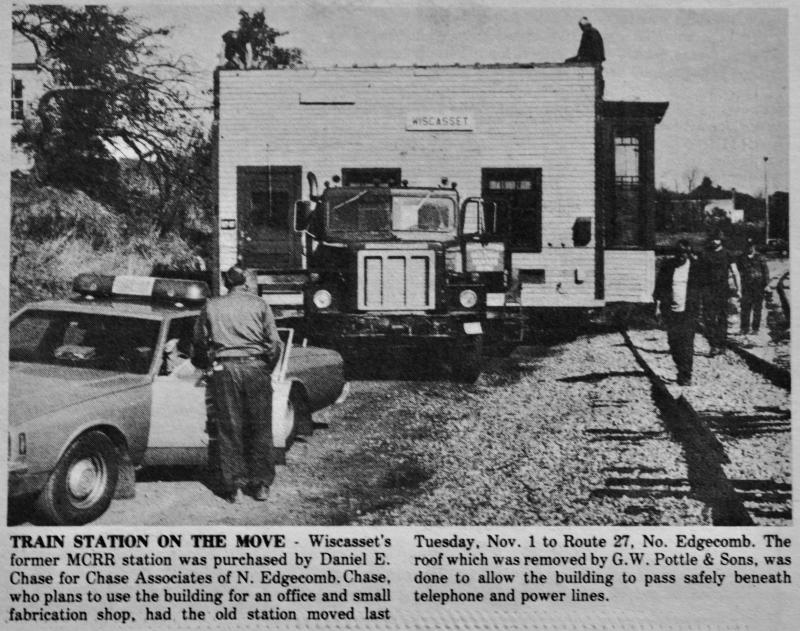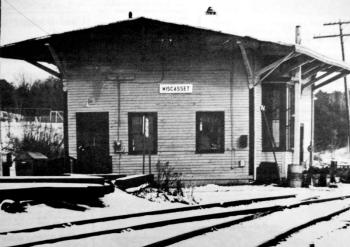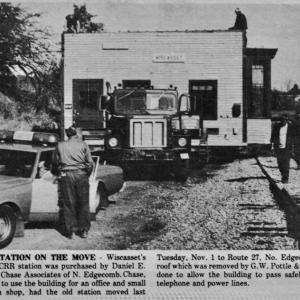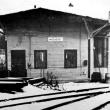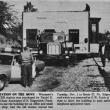Kaboom! But was it worth it?
This story takes place almost 99 years ago, during the “Roaring Twenties,” the time of Prohibition, gangsters, silent movies. Calvin Coolidge was America’s President and Babe Ruth was on his way to becoming a baseball legend. The setting is Wiscasset, a charming village on the Sheepscot River, population about 1,100 souls, roughly half the number it had in 1850 when it was among the busiest seaports north of Boston.
It was a sultry summer night, the moon a waning gibbous, was low in the western sky. About an hour or so after the town clock struck midnight there was a strange rumbling on the waterfront that rattled the windows on the northside of the village. The cause of the mysterious noise would become front page news later that day, Friday, July 18, 1924. It was among the top stories appearing in Maine’s evening newspaper, its headline reading: BURGLERS BLOW SAFE, WISCASSET – Get about $100 from M.C. Freight Office – Take only Cash, Carefully Replace Disturbed Papers.
Before we get too far along, you should know that in the 1920s most people got their news from the newspaper, or over the telephone. Radios were becoming popular but cost more than most families could afford to spend. In 1924 the year our story takes place RCA introduced its first radio for the masses which was moderately priced at $24.50. That sounds like a bargain until you consider in today’s dollars that comes to about $420. Wow! And, one more thing, the M.C. Freight Office was located in the former Wiscasset Train Station at the upper end of Railroad Avenue. I’ll get to what happened to the station in a minute, first let’s return to the newspaper story.
The opening paragraph reads: “Burglars put in such a heavy charge of nitroglycerine in blowing the safe of the Maine Central railroad freight office some time during the early hours of the night that the safe was literally blown to pieces, and broken pieces of iron were blown through the patrician on the opposite side of the room…” The first question I have is how in the world did the investigators determine that nitroglycerine was used to blow the safe? I wonder, too, how the authorities determined there was more than one burglar?
Well let’s not concern ourselves with this, let’s read on. “Examination this morning by Station Agent F.H. Gray and Miss Amy Libby, the cashier, shows that only $100 was secured by the burglars, who carefully looked over the contents of the safe after removing it to another part of the building.” (A hundred dollars is the equivalent of about $1,749 today, which if nothing else would have bought the bandits a few radios.)“No fingerprints are evident on the safe or woodwork or papers, the burglars evidently worked with gloves on.” The practice of using fingerprints as evidence had been around since the early 1900s and by the 1920s it was a routine police practice. “Entrance was gained to the building by jimmying a window on the east side of the room toward the railroad tracks.” That would be the side facing the river that couldn’t be seen from the village, the closest homes being on Water and Lincoln streets.
“The safe was evidently blown about 1:30 this morning, as at that hour several in this place (neighborhood) heard an explosion …,” the story continues, adding that during the same evening a dance had been held which had concluded after midnight. The dance may have been held at Franklin Hall located on the upper floor of the brick building which still stands at the corner of Main and Middle streets and now serves as home to In the Clover, a women’s boutique.
The story then takes an unexpected turn.“The burglars evidently were after cash, for they apparently were very careful not to take or disturb papers which they removed from the safe, although everything was evidently thoroughly looked over … They even carefully laid a book of Masonic ritual, which was kept in the safe, back on the pile of papers.” I wonder why they took the time to do this? Strange.
I don’t know whether the robbers were ever caught. I can tell you that F.H. Gray, the MCRR station agent, stayed on in Wiscasset. Twenty years after the freight station heist his name appears in the 1944 Town Report. F.H. Gray is listed as chairman of the town’s budget committee which that year recommended voters pass the selectmen’s proposed budget of $39,611.
Amy Libby remained in Wiscasset, too. According to the 1940 Census, she was still unmarried at age 48 which means she would have been about 16 when she was employed as cashier at the railroad’s freight office. She continued working for the railroad long enough to receive a pension from them. The same source gives Miss Libby’s address as 235 Washington St. where she operated a boarding house where four lodgers resided including 90-year-old Gertrude “Trudy” Murray of Wiscasset.
And what about the train station and freight office? Maine Central Railroad advertised it for sale in September 1983 on the condition that it be removed from its location at the upper end of Railroad Avenue and it was. About a month later, Danny Chase of Edgecomb bought it to use as an office for Chase Associates where it can still be seen today.
Back in the 1990s when the railroad was considering restoring passenger train service to Wiscasset, there was talk in town about building a new train station here on the site of the former one. Nothing ever came of that but someday, well, who knows. Special thanks to my old friend Steve Christiansen of Willow Lane who discovered this old newspaper clipping. He shared it with me, so I could share it with you.
Phil Di Vece earned a B.A. in journalism studies from Colorado State University and an M.A. in journalism at the University of South Florida. He is the author of three Wiscasset books and is a frequent news contributor to Wiscasset Newspaper and Boothbay Register. He resides in Wiscasset. Contact him at pdivece@roadrunner.com



